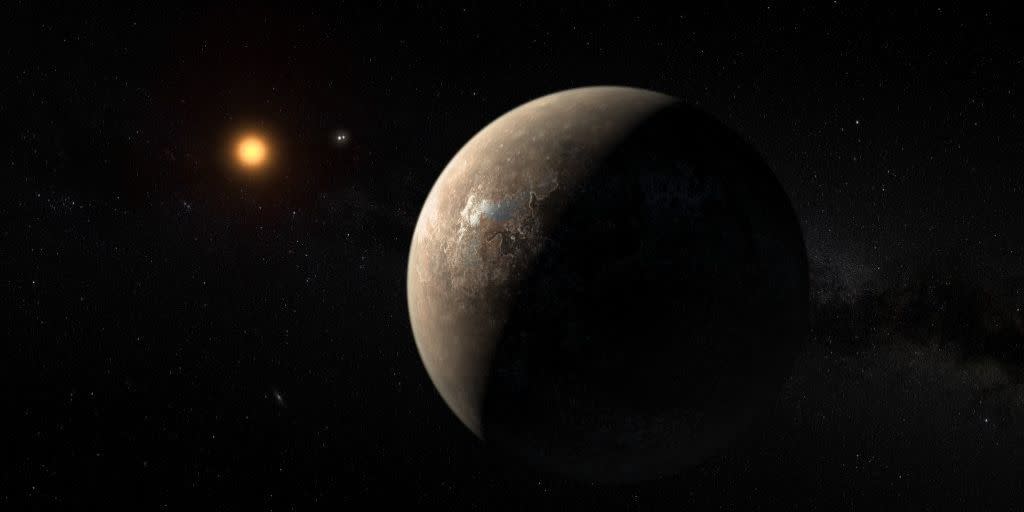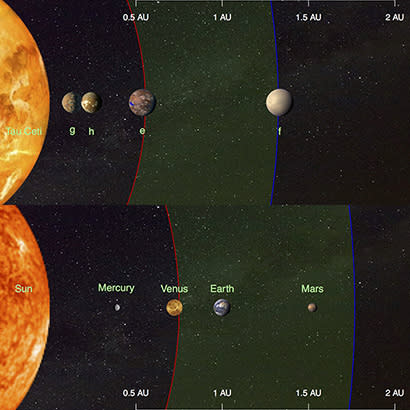Four Earth-Sized Planets Discovered Around Closest Sun-Like Star

What's the closest habitable world to our own? It's a question we can't answer yet, but we've found a lot of possible candidates. Some of these, like Proxima b discovered last year and the 7 Trappist planets discovered back in February, are Earth-sized planets orbiting around dwarf stars nextdoor to our own. But these planets might not be habitable after all, as they orbit around volatile red dwarfs.
A new discovery has none of those problems. A group of astronomers has discovered four Earth-sized planets orbiting around Tau Ceti, a yellow star similar to our own. Two of those planets are in their star's habitable zone, which means there's a good chance we could find life there.
These exoplanets were not easy to spot, but the combination of years of telescope observations and new statistical techniques revealed them. Tau Ceti has complex fluctuations on the stellar surface which can mess with exoplanet observations, and the team spent years trying to compensate for them.
In the end, they stumbled on a technique that let them find the exoplanets without those fluctuations getting in the way.
"We came up with an ingenious way of telling the difference between signals caused by planets and those caused by star's activity," said study author Mikko Tuomi. "We realized that we could see how star's activity differed at different wavelengths and use that information to separate this activity from signals of planets."
This is a good sign for future efforts to detect planets around similar stars in the future.

"We are now finally crossing a threshold where we can disentangle the noise due to stellar surface activity from the very tiny signals generated by the gravitational tugs from Earth-sized orbiting planets," says study author Steven Vogt.
As for the Tau Ceti planets, all of them are bigger than the Earth, but not by much. Two of them lie within their star's habitable zone, which means liquid water could form on their surfaces. Two planets in the habitable zone means twice the chance to form life, which makes Tau Ceti one of the best places to find life outside our solar system.
While we won't be visiting any of these planets any time soon, perhaps more telescope observations can tell us for sure whether there's life there.
Source: UC Santa Cruz
You Might Also Like

